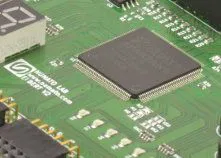Table of Contents:
Digital Light Processing is the most advanced light resin printing technology available to home users.
While professional 3D printing companies with extensive fleets of machines can choose from a variety of modelling technologies, home and semi-professional workshop users have essentially three technologies to choose from. The first of these is the most common printing with the use of filaments, and the other two – SLA and DLP, based on the production of details by curing liquid resin. How does DLP differ from stereolithography and in which applications is it better?

What is DLP printing about?
Digital Light Processing is based on curing UV resin with light generated by the projector. Current 3D printers on the market usually use an LCD or even HD LCD projector, while the UV light is often emitted by a matrix that ensures uniform illumination of the entire surface. The LCD display reproduces the image (i.e. the shape of the layer being cured) with very high accuracy and resolution, allowing the UV rays to affect precisely defined parts of the printed model.
The entire printing process therefore consists of displaying successive sections of the design and applying ultraviolet radiation to the entire surface of a given section each time. Successive, extremely thin (up to tenths or even hundredths of a millimetre of thickness) layers compose the whole spatial model – exactly as in the case of successive layers of filament in FDM/FFF printers.
How does DLP printing differ from stereolithography?
Digital Light Processing uses materials similar to stereolithography, also the idea of creating models from light-cured resin remains the same. The most important difference, however, lies in the method of exposing the printout. While in the case of SLA, this is done by a laser beam, circulating the entire surface in succession, in the case of DLP 3D printing allows exposure of the entire cross section of the workpiece at one time. Thanks to this, the DLP printing process itself is slightly faster than in the case of stereolithography, especially if on the working platform is to be created ultimately more details or the printed element has a large cross-sectional area.

In DLP printers, the projector is located underneath the UV resin tank. The remaining elements of the device – i.e. the working platform, to which the created model is “glued”, as well as the system responsible for its precise lifting and positioning, function analogically as in SLA printers. The external casing construction is also similar – with a closed, ventilated chamber, preventing the escape of irritating resin fumes.
Which DLP printer to choose?
There are many models of 3D printers equipped with projectors for exposing printouts available on the market. We can easily find ones that home workshops owners, enthusiasts or small business owners can afford.
One particularly affordable device is the Creality LD-002H printer, which offers a workspace of 130 x 82 x 160 mm. It is equipped with an LCD display with 4K resolution, which translates into the possibility of achieving a very thin print layer thickness in the range of 0.03 to 0.05 mm.
An interesting solution is the Anycubic Photon Mono X model with a workspace of 192 x 120 x 245 mm, with an 8.9″ 4K LCD projector. Like the Creality device, this printer also features software with anti-aliasing, which smooths the edges of the image, resulting in smoother outlines of printed models. In this case, the slicer supports up to 8-fold anti-aliasing. An interesting feature is the Z-axis design, which is based on a combination of dual linear rails, a stepper motor and a spacer nut. This solution significantly improves stability during movement and reduces the risk of layer displacement.
How useful was this post?
Click on a star to rate it!
Average rating 0 / 5. Vote count: 0
No votes so far! Be the first to rate this post.





















